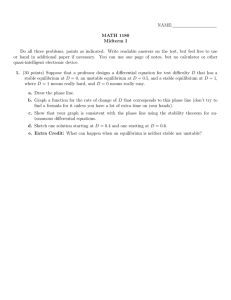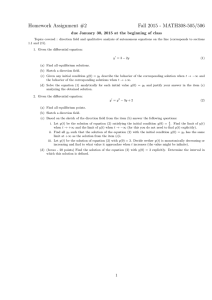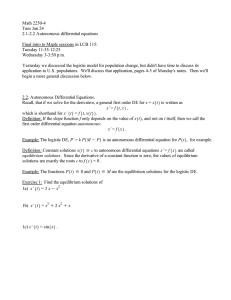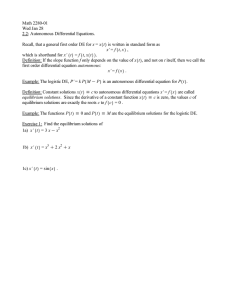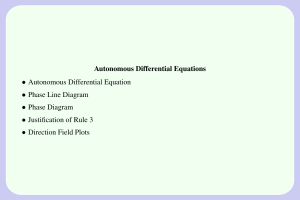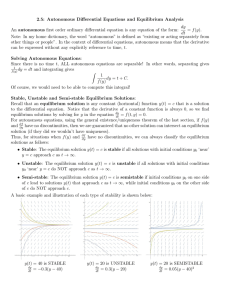Lesson 15. Qualitative Analysis of Differential Equations 1 Overview
advertisement
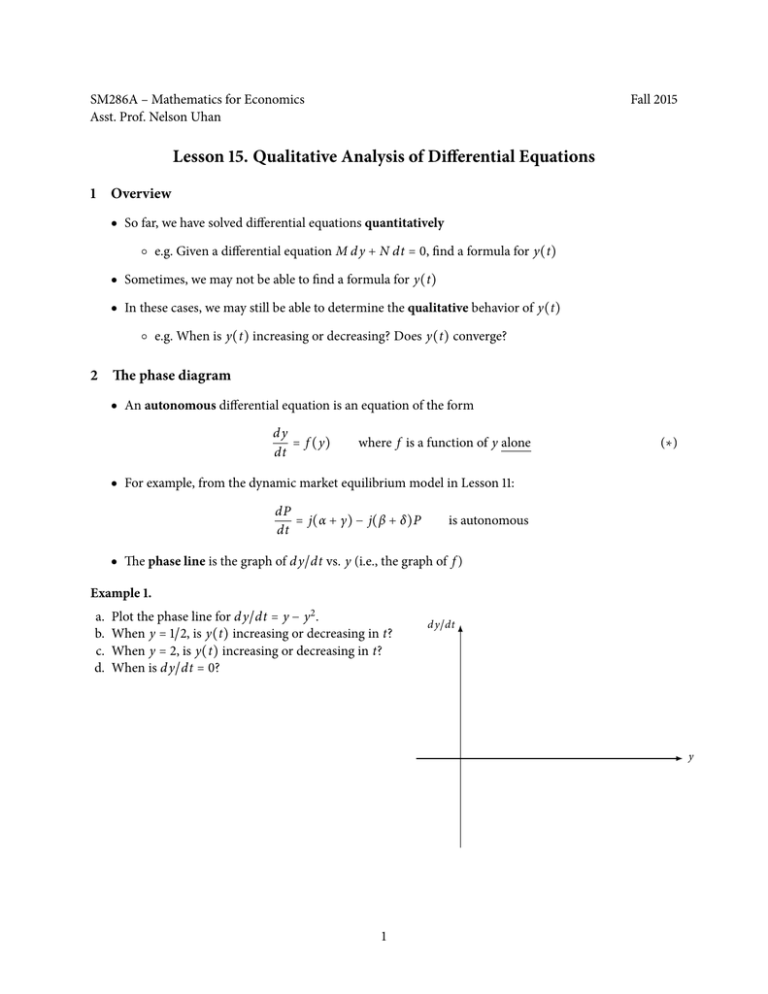
SM286A – Mathematics for Economics Asst. Prof. Nelson Uhan Fall 2015 Lesson 15. Qualitative Analysis of Differential Equations 1 Overview ● So far, we have solved differential equations quantitatively ○ e.g. Given a differential equation M d y + N dt = 0, find a formula for y(t) ● Sometimes, we may not be able to find a formula for y(t) ● In these cases, we may still be able to determine the qualitative behavior of y(t) ○ e.g. When is y(t) increasing or decreasing? Does y(t) converge? 2 The phase diagram ● An autonomous differential equation is an equation of the form dy = f (y) dt where f is a function of y alone (∗) ● For example, from the dynamic market equilibrium model in Lesson 11: dP = j(α + γ) − j(β + δ)P dt is autonomous ● The phase line is the graph of d y/dt vs. y (i.e., the graph of f ) Example 1. a. b. c. d. Plot the phase line for d y/dt = y − y2 . When y = 1/2, is y(t) increasing or decreasing in t? When y = 2, is y(t) increasing or decreasing in t? When is d y/dt = 0? d y/dt y 1 ● To complete the phase diagram: ○ Draw arrows on the horizontal axis indicating the direction in which y is moving ◇ When d y/dt > 0, y(t) is ◇ When d y/dt < 0, y(t) is ○ Mark the equilibrium points, or where y is stationary over time (d y/dt = 0) Example 2. Using the phase diagram, draw approximately how y behaves over time, starting at y = −0.1, y = 0.1, y = 0.5, y = 1.5. y(t) 1 0 t ● If the slope at an equilibrium point is: ○ positive, then the equilibrium is ○ negative, then the equilibrium is Example 3. Plot the phase line for d y/dt = 3 − 2y. What are the equilibrium points? Are the equilibrium points dynamically stable or unstable? 2

